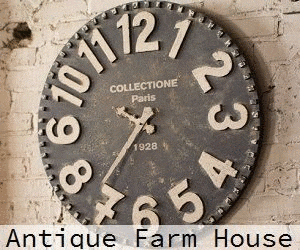One year ago, almost to the day, I snagged a beautiful swan chair at a local estate sale -- for only $35! Unfortunately, the seat needed to be recaned. Fast forward to this year and the beginnings of a restoration for this awesome Hollywood Regency Swan Chair.

As explained in my prior estate chair reveal post, my husband agreed to help me figure out a way to "fix" the seat of the chair that needed to be recaned. Due to the exorbitant cost of sending it out to be recaned, he instead went ahead and crafted a new seat altogether -- solving the seat problem and saving a lot of money in the process.
However, even with a new seat, I'm left with two different restoration dilemmas and I need your help!
After purchasing 1/2 inch thick plywood, the first step was to make a paper template to get the seat's shape and dimensions. To do this he used butcher paper and a pencil to trace the outline of the seat and then cut it out.
The second step was to trace the paper template onto the wood, which he did after securing the paper with painter's tape.
Then, following the lines of the template, using a jigsaw, he cut out the wooden seat insert.
It took a few tries with the jigsaw to get the seat insert fitting (mostly) properly over the broken caned seat area.
He was limited by the actual amount of solid wood available around the rim of the seating area (to properly support support the insert).
In this close-up of the front middle section of the chair you can see a bit of the broken cane visible sticking out from underneath the insert. It's such a small amount it won't cause a problem for the overall appearance of the chair (or safety).
HOW TO CAMOUFLAGE THE WOODEN SEAT INSERT?
However, while he cut the wooden seat insert as close to the template as possible, you can still see the front of the wooden insert under the original seat cushion, clearly due to its thickness.
Which leaves me with a conundrum: how do I camouflage the wooden seat insert? I'm vacillating between 1) trying to stain it like the original wood (which will be a hit or miss, messy process), 2) attempting to paint it the same color as whatever seat cushion cover I end up using or 3) covering it with the same fabric as the cushion cover for maximum camouflage effect.
None are perfect solutions, I know. In a perfect world we'd use a thinner board that might not be so obvious, but for safety reasons we went with the 1/2 inch thick plywood insert instead.
WHAT WOULD YOU DO TO CAMOUFLAGE
THE WOODEN SEAT INSERT?
HOW TO REUPHOLSTER THE ORIGINAL SEAT CUSHION?
Since I really want to use the original 90% down filled seat cushion (despite the need for a new cushion cover), I got quotes from two local upholsterers for the cost of a new one.
One quoted me $402.00 and the other quoted me $102.00. Neither quote even included fabric! The second merchant actually upcharged me 20% because I wasn't going to be buying my fabric from her! Really? I found that rather odd. Either way, I don't want to pay that kind of money for a seat cover.
Unfortunately I am NO seamstress, not by any stretch of the imagination -- so what do I do?
My concerns are twofold: 1) what pattern/type of fabric do I want to use and 2) what's the easiest method for a DIY seat cushion cover?
I may have figured this thing out as I'm writing this. Being a no-sew gal, I'm always up for a no-sew solution. What if I just covered the top and bottom sections of the cushion within the piping (which is where the damage is) and leave the rest (including the sides and piping) alone? All I need is a beautifully patterned fabric that compliments the original fabric and some fabric glue.
SO WHAT DO YOU THINK?
WHAT'S THE BEST WAY TO
COVER THE SEAT CUSHION?
Last but not least, do you think we need to permanently attach the wood insert to the chair, and if so, how would you attach it (e.g. wood glue, nails, etc.)?
I hope you've enjoyed reading about my
Hollywood Regency Swan Chair
Makeover Problems
and that I've inspired you in some way.

.jpg)







.png)











Leave a Comment!
Beautiful!
That's an awesome piece! If you decide to stain the wood seat, try Dixie Belle's No Pain Gel Stain. It's the consistency of pudding so it isn't messy like a traditional liquid stain. The problem will be matching the wood color.
Another suggestion would be to cover the wood with a thin batting & then cover it with whatever fabric you decide to use for the cushion. As for the cushion, post what you need done on Facebook. There are so many home based businesses that don't charge as much as some places.
Whatever you do, I can't wait to see the finished product! I know it'll be beautiful.
Kathleen,
Your chair make over is lovely!! Love the swan detailing...I have a similar chair, no swans though...I left it as is as it is in excellent shape and matches my bedroom furniture...Thanks for sharing...I hope you are staying warm...
Hugs,
Deb
Debbie-Dabble Blog
Hi Kathleen. That chair is awesome I can see why you fell in love with it. If I had the chair I would put batting on the seat and staple it underneath the wood and chair seat. That way you have covered the wood and if you want too you could still use the same fabric and make a chair seat cushion. Or just stuff it well and do not put a seat cushion on and just leave it as a fabric seat cover. Hope that makes sense. I know whatever you do it will work out and be beautiful.
Post a Comment